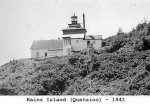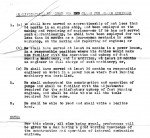 The following extracts taken from early Victoria, British Columbia (BC) newspapers are credited to Leona Taylor for her excellent work in indexing the papers. Full information can be found here: ”Index of Historical Victoria Newspapers“, 2007-09.
The following extracts taken from early Victoria, British Columbia (BC) newspapers are credited to Leona Taylor for her excellent work in indexing the papers. Full information can be found here: ”Index of Historical Victoria Newspapers“, 2007-09.
******************************
Dominion Government Steamer Quadra is loading supplies for the lighthouses of West Coast Vancouver Island, and is expected to leave about the end of the week. [Colonist, 1912-09-05]
Walbran may command Estevan… came here in 1888 with SS Islander, native of Yorkshire, England, b 1848. Educated at Ripon Grammar and served on British training frigate Conway, served in merchant marine for 11 years, and secured his master’s certificate at age 22. First ship commanded by Walbran was sailing vessel British Consul, bound from Continue reading Lighthouse History – 41 (1912-09-05 to 1914-12-30)





